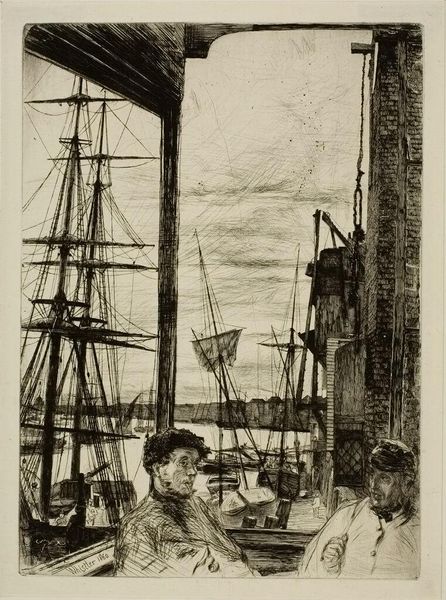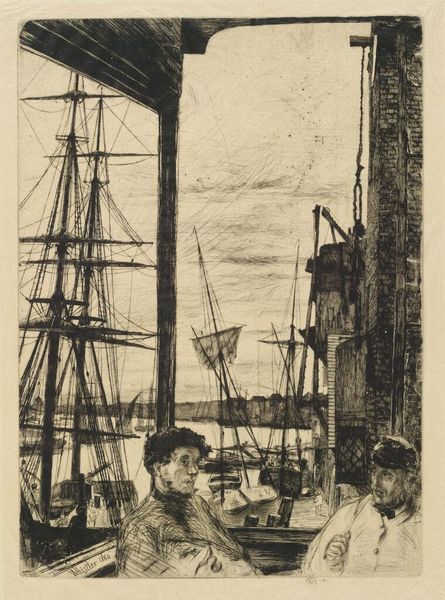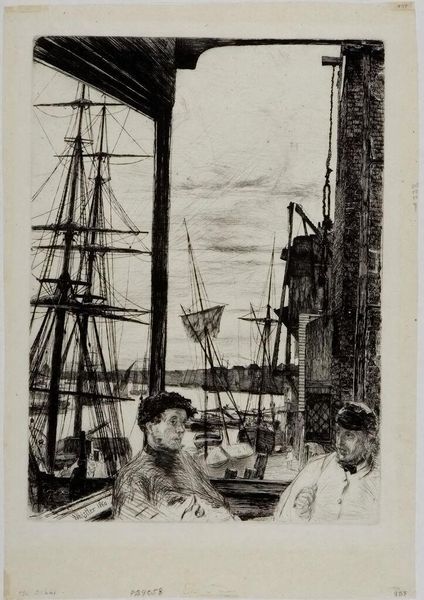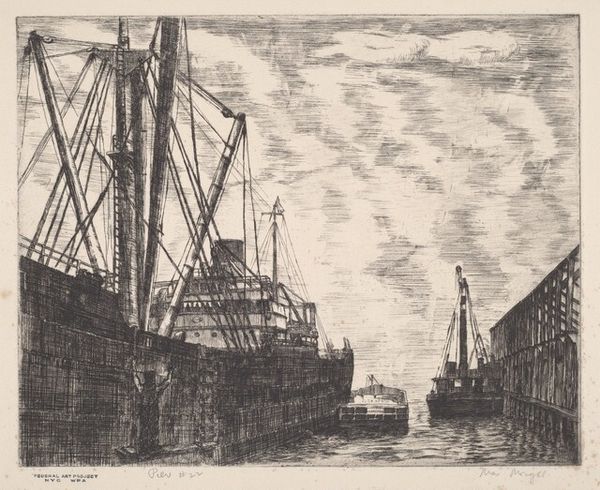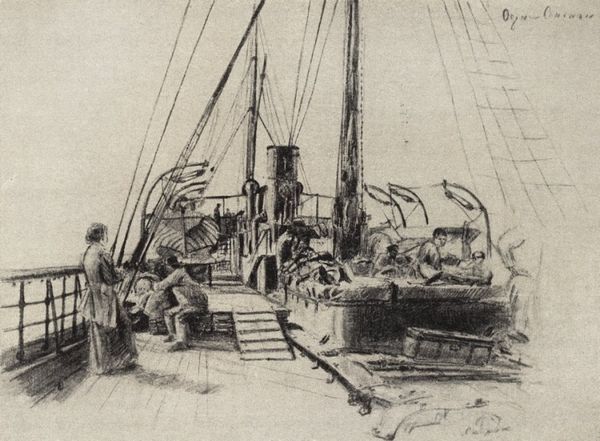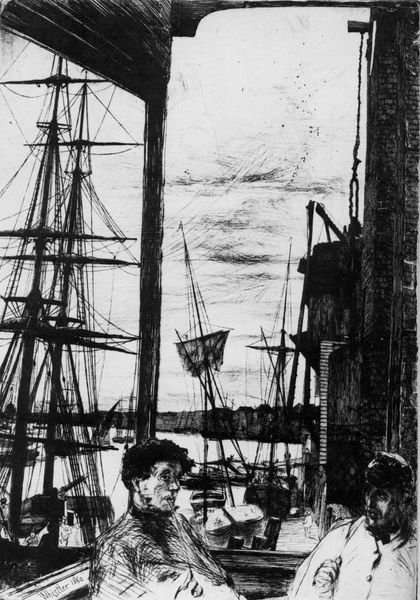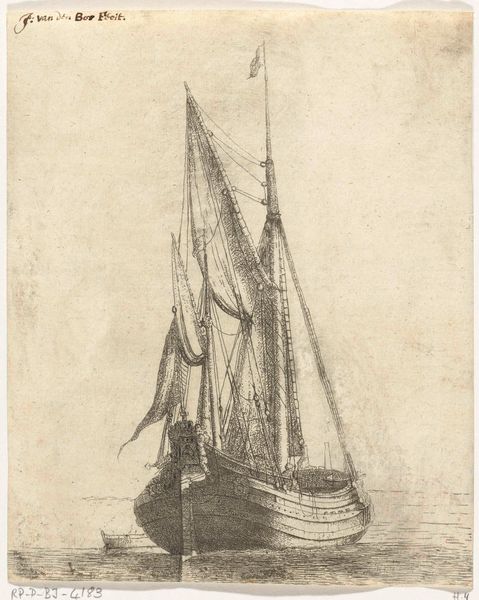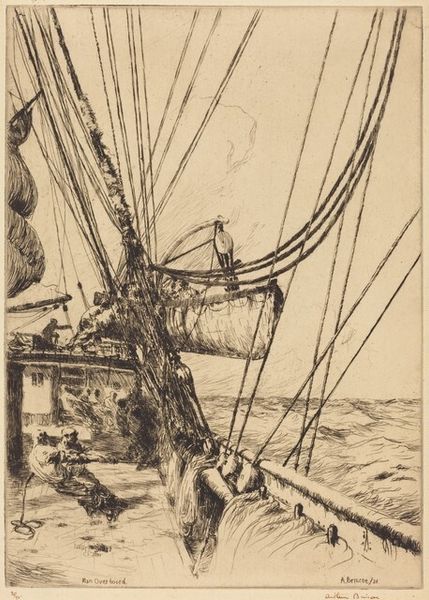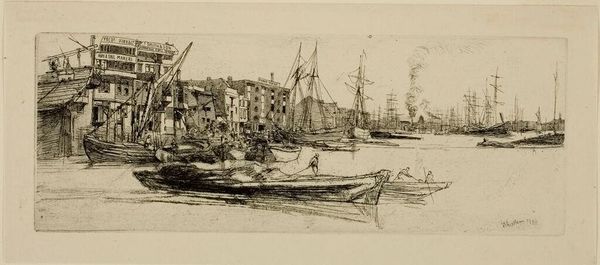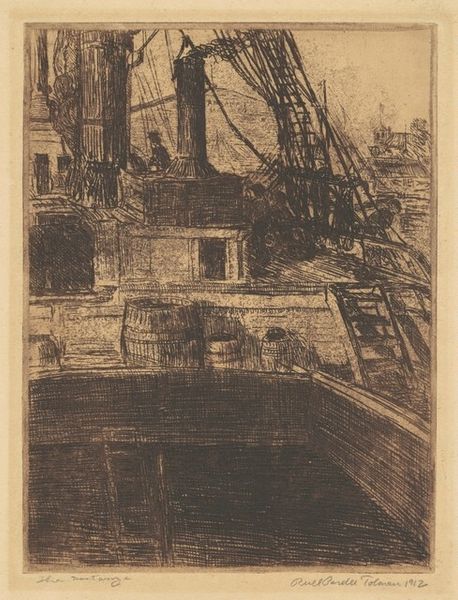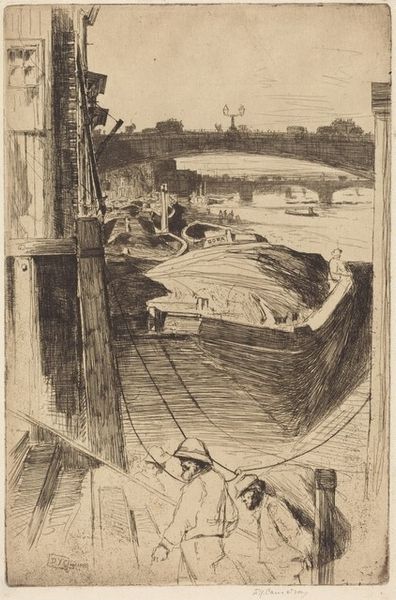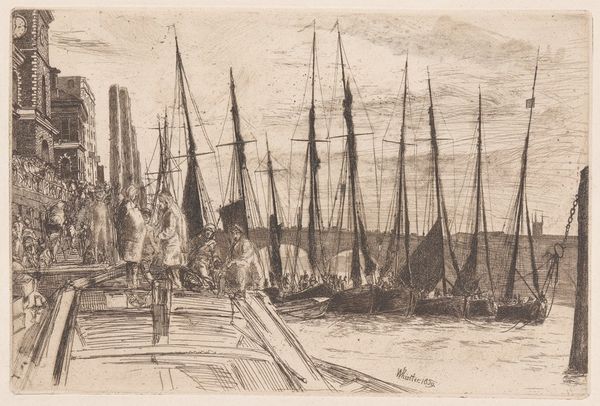
drawing
#
drawing
#
amateur sketch
#
light pencil work
#
quirky sketch
#
shading to add clarity
#
pen sketch
#
pencil sketch
#
incomplete sketchy
#
personal sketchbook
#
pen-ink sketch
#
sketchbook drawing
Copyright: Public Domain: Artvee
Editor: This is "Rotherhithe" by James Abbott McNeill Whistler, created in 1860 using a drawing medium. It has such a wonderfully sketchy quality, almost like a page torn straight from an artist's personal sketchbook. What do you make of it? Curator: The lines themselves betray the intense labor involved in etching, and subsequently printing, such a detailed view. The material reality is paramount. The scene itself is London’s docklands, a nexus of trade and labour. Notice how Whistler focuses our attention not just on the ships themselves, the tools of global exchange, but also on the working men who inhabit this space. How do their presence and rendering shape your understanding of the piece? Editor: I see. They’re quite central to the composition. They seem tired, worn perhaps? Does that have anything to do with how this era’s industrial workers were portrayed, perhaps in comparison with other more "glamorous" pieces? Curator: Precisely! Consider the commodification of art versus the unglamorous reality of the working class depicted here. Whistler forces us to confront the material conditions that underwrite even the most aesthetically pleasing scenes. Also, notice the use of line: deliberately unfinished, drawing attention to the process itself. Are we meant to see "beauty" here, or witness labour? Editor: I think it's really fascinating how you brought attention to labor and its materials, which definitely adds a different layer to appreciating this seemingly simple drawing. Curator: Absolutely. Reflecting on the materials, processes, and social realities interwoven in Whistler’s "Rotherhithe," shifts our engagement beyond mere aesthetics, doesn’t it?
Comments
No comments
Be the first to comment and join the conversation on the ultimate creative platform.
